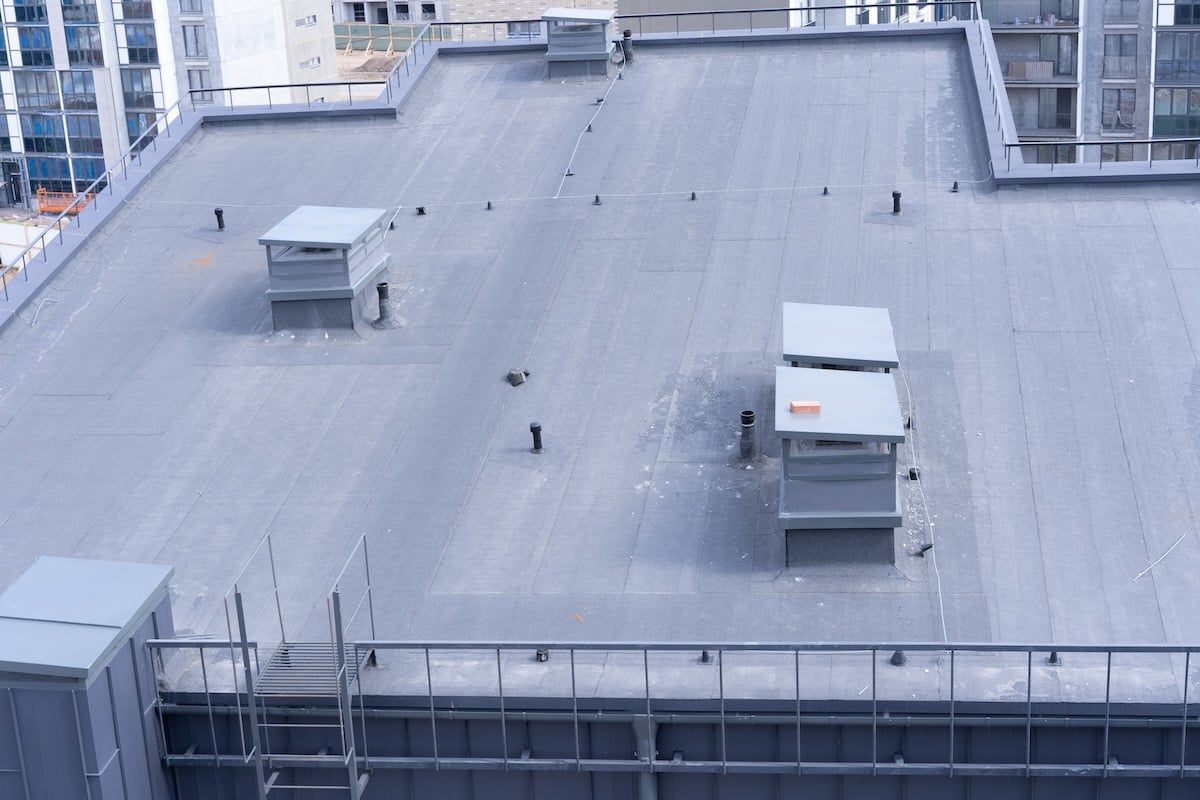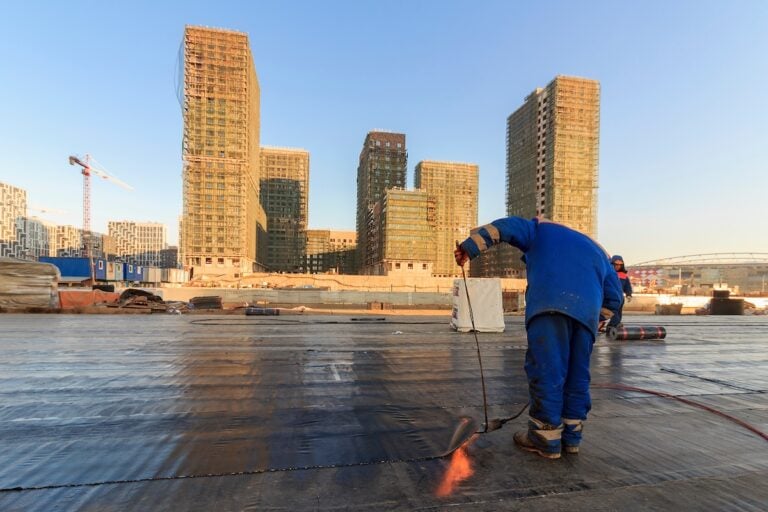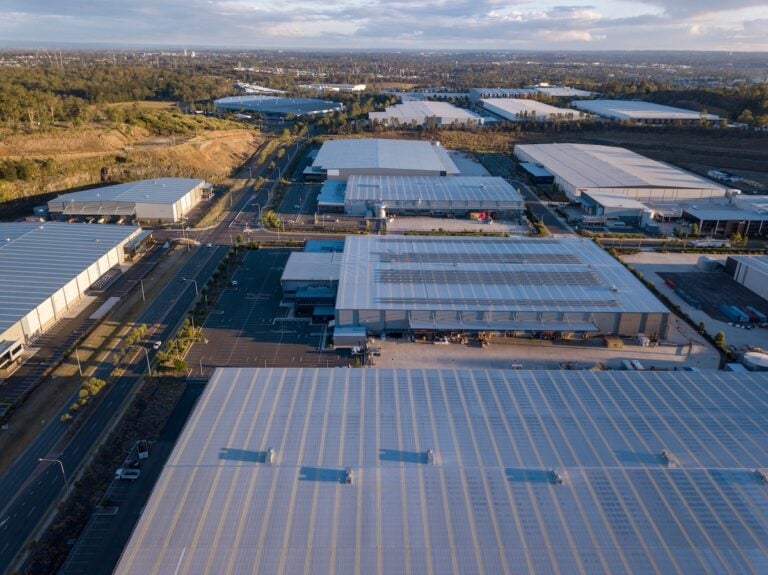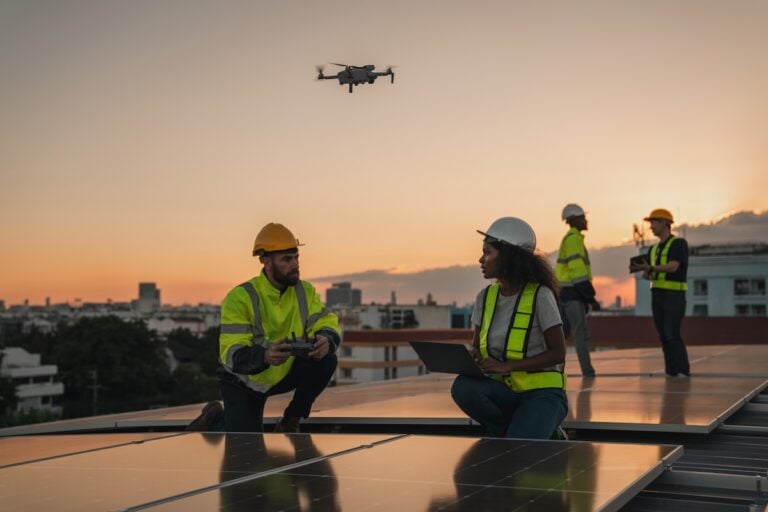A built up roof is one of the most time-tested commercial roofing systems, offering layers of durability and weather resistance that make it a popular choice for property owners. Whether you own an office building, retail center, or warehouse, understanding how BUR systems work—and their benefits and drawbacks—can help you decide if it’s the right solution for your property.
- Durability advantage: Multiple layers of protection help BUR roofs withstand harsh conditions.
- Cost balance: While installation costs may be higher than some systems, long-term savings can offset the initial investment.
- Low-maintenance performance: BUR requires fewer repairs compared to less robust systems.
🤔 What Is a Built-Up Roof?
A built up roof, commonly known as BUR, is a multi-layer roofing system that has been used for more than a century. It typically consists of alternating layers of bitumen (asphalt or coal tar) and reinforcing fabrics, topped with a protective surface such as gravel or mineral granules. The layered design creates a seamless, durable barrier that protects against water, UV rays, and mechanical damage.
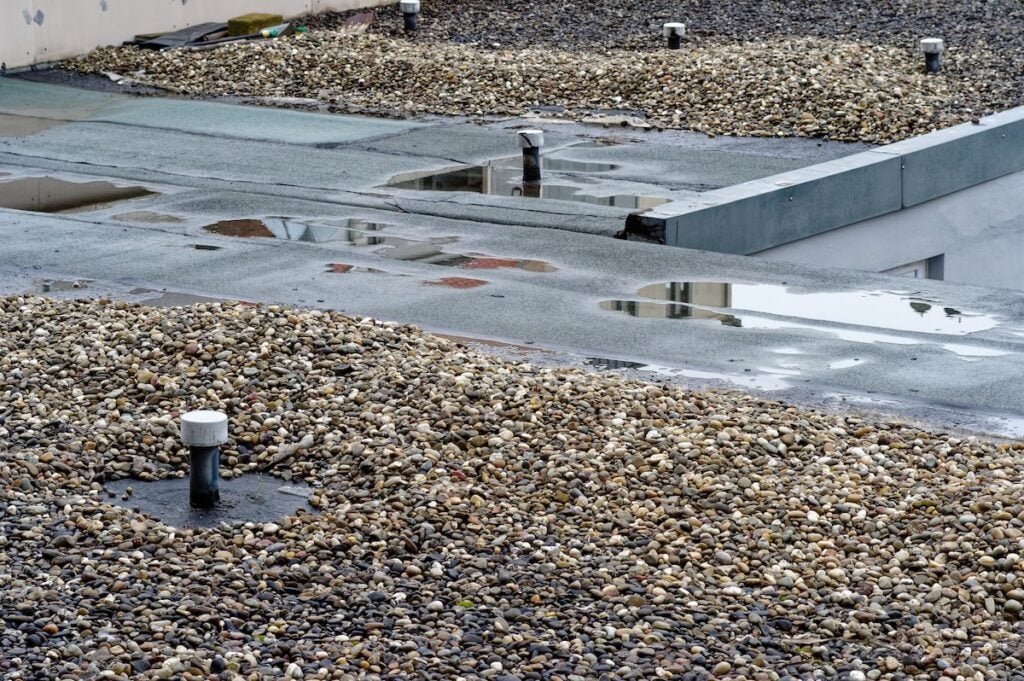
One of the reasons BUR remains popular is its adaptability. Contractors can add more layers—called “plies”—to increase protection based on the building’s needs. For example, a warehouse storing sensitive equipment may require more layers than a small office space. The top surfacing also offers customization, with options like smooth asphalt, reflective coatings, or gravel, each designed to enhance performance.
For commercial property owners in Gresham and surrounding areas, this system is especially appealing because it can handle Oregon’s wet weather while providing long-term value.
✅ Pros of Built-Up Roofing
BUR systems offer several benefits that make them a reliable choice for commercial properties.
- Proven Durability: The multi-layer construction provides redundancy, meaning even if the top layer is damaged, the layers below continue to protect the building. This makes BUR a long-lasting option for high-traffic roofs.
- Superior Waterproofing: Bitumen layers are highly resistant to water penetration, which is essential for flat or low-slope roofs that often face drainage challenges. The addition of gravel also helps protect the roof surface from pooling water.
- UV and Fire Resistance: The top layer of gravel or mineral coating provides excellent protection from harmful UV rays and increases fire resistance, giving commercial property owners peace of mind.
- Low Maintenance: Because of its layered strength, BUR requires fewer emergency repairs compared to thinner roofing systems. Regular inspections and minor upkeep are typically enough to keep it performing well.
❌ Cons of Built-Up Roofing
Like any roofing system, BUR comes with potential downsides to consider.
- Higher Installation Costs: The upfront cost of materials and labor can be higher than single-ply options. However, many owners find the long-term durability justifies the initial investment.
- Installation Time: Installing multiple layers takes longer than other systems. This can lead to extended disruption for tenants or business operations if not carefully scheduled.
- Weight Considerations: BUR is heavier than many alternatives. Buildings must be structurally capable of supporting the additional load, which can sometimes require reinforcement.
- Odors During Installation: Hot asphalt and tar used in the process can produce strong odors. While temporary, this can be inconvenient in occupied commercial spaces.
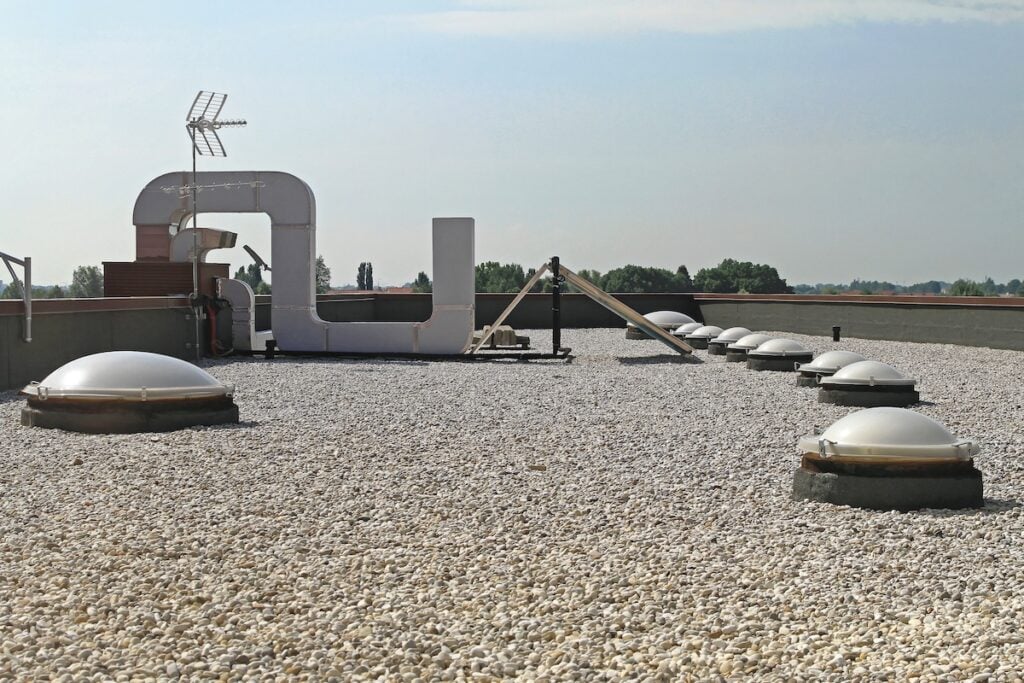
💵 Built-Up Roof Costs
The cost of a built up roof depends on factors like size, materials, and local labor rates. On average, property owners can expect:
- Installation range: Typically between $4 to $10 per square foot.
- Lifespan: 20 to 30 years with proper maintenance, which makes the investment worthwhile over time.
- Long-term value: Lower repair frequency and energy savings often offset higher upfront costs.
It’s also worth noting that BUR systems are often considered cost-effective for large commercial buildings because of their ability to cover broad areas with reliable performance. While the upfront costs are higher, many property owners find that reduced repair calls, lower energy bills (due to the reflective surfacing options), and extended service life more than balance the equation. In other words, BUR is an investment in stability rather than a short-term fix.
For commercial property owners in Gresham and surrounding areas, consulting with a professional roofing contractor ensures you get an accurate estimate tailored to your building’s unique needs.
⭐️ 5 Key Considerations Before Choosing BUR
- Building structure: Can it handle the added weight of multiple roofing layers?
- Budget priorities: Are you more focused on long-term savings or upfront affordability?
- Climate impact: Will the roof effectively handle the rain, snow, or heat in your region?
- Tenant needs: Can installation disruptions be managed without affecting occupants?
- Maintenance expectations: Are you prepared for regular inspections to ensure maximum lifespan?
📋 BUR vs. Other Roofing Systems
When compared to single-ply systems like TPO or EPDM, BUR stands out for its redundancy and durability. Single-ply roofs may be quicker and cheaper to install but often lack the multi-layer protection that makes BUR such a long-term performer.
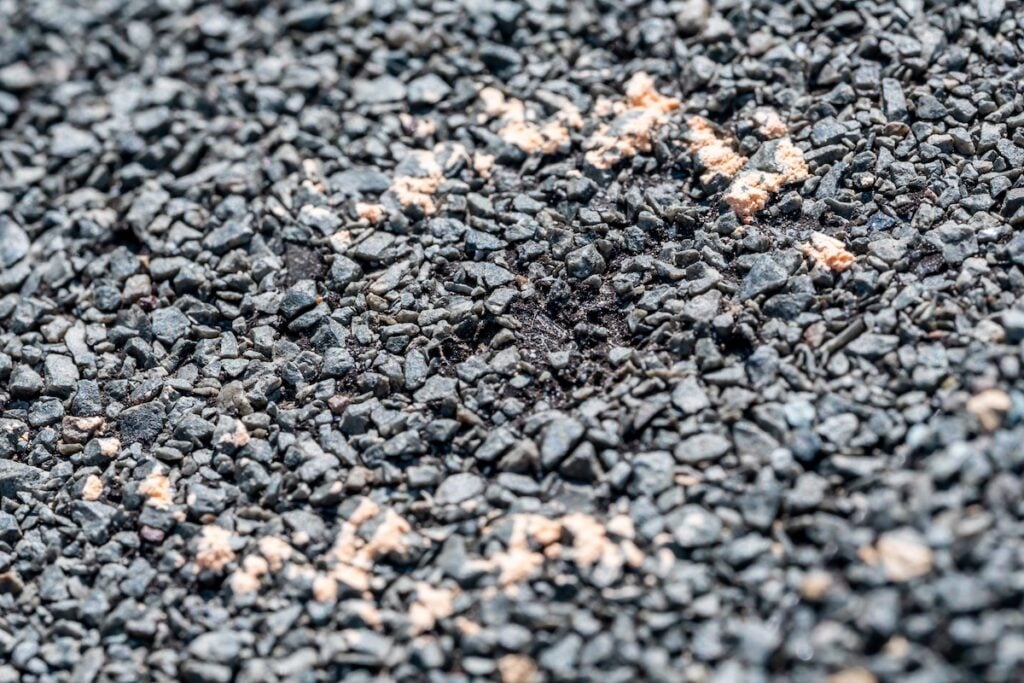
Metal roofing systems, on the other hand, are highly durable and energy-efficient but can cost significantly more upfront than BUR. Spray foam roofs provide excellent insulation but may not have the same resistance to heavy foot traffic as a gravel-surfaced BUR. Each roofing type has its advantages, but BUR continues to be a strong choice for building owners who want a proven, time-tested solution with consistent results.
Ultimately, the decision comes down to balancing priorities—speed and upfront cost versus durability and long-term peace of mind.
| Roofing System | Lifespan | Upfront Cost | Durability | Maintenance Needs | Best For |
| BUR (Built-Up Roof) | 20–30 years | $$–$$$ | Excellent (multi-layer protection) | Low (periodic inspections) | Large commercial buildings needing proven performance |
| TPO (Single-Ply) | 15–25 years | $$ | Good (seam weaknesses possible) | Moderate (seam repairs, punctures) | Buildings needing energy efficiency and fast installation |
| EPDM (Rubber Roof) | 20–30 years | $$ | Good (resists UV and weathering) | Moderate (patches for punctures) | Cost-conscious owners with flat/low-slope roofs |
| Metal Roofing | 40–50 years | $$$$ | Excellent (highly durable, fire-resistant) | Low (long lifespan with coatings) | Owners seeking longevity and premium performance |
| Spray Foam Roofing | 20–25 years | $$–$$$ | Good (seamless, insulative) | Moderate (requires recoating) | Energy-efficient upgrades with added insulation |
🏢 Is BUR Right for Your Property?
A built up roof offers unmatched durability, strong waterproofing, and proven performance that has stood the test of time. While it comes with higher upfront costs and weight considerations, its long-term value makes it an excellent choice for many commercial properties.
At Boss Exteriors, we help property owners in Gresham and surrounding areas evaluate whether BUR is the best solution for their building. Our team brings expertise, quality materials, and reliable installation practices to every project.
If you’re considering a commercial roof upgrade, contact Boss Exteriors today for an expert assessment and a detailed estimate. We’ll help you determine if built up roofing is the right investment for your property.
